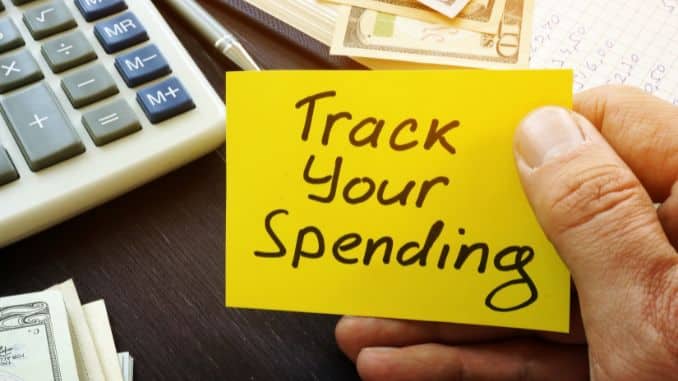Although our bodies can be healthy in terms of our physical fitness and recovering through injury, finances play a crucial role in feeling healthy and stress-free not just in your physical body but obviously emotionally as well. Starting a budget is essential. Finances have the ability to lead you to incredible stress and result in poor emotional and physical states.
Once finances are on track and healthy, it can certainly facilitate healthy living through pursuing active goals maybe like adventure hikes perhaps even sports that cause money to participate in.
Lots of people run for the hills when the word budget is mentioned because budgeting is likened to dieting. Neither sound fun but the interesting part of budgeting for yourself when you have heaps of debt is that you will actually find it liberating.
Once you have money allocated to different areas like shopping or for some physical activity that you wanted to do, it felt less terrible to spend it in that area because you had intended that money for that area. We hope you are not scared by that word.
Once we go through a couple of things, you might see how it can be quite helpful. It is not just getting out of debt, but even for achieving goals faster. It essentially helps to align your money with your personal goals and eliminate guilt when you do spend.
1. Choose a Budgeting Tool

Budgeting Tools can vary depending on your certain comfort level and what you think would keep you accountable. This means that you can simply get started with your pen and paper with your calculator, you can work with an excel spreadsheet, find software like YNAB (You Need A Budget) which is a budgeting software company, or whatever that works for you. YNAB offers two things:
- It offers a place to create a budget.
- It has a place to track what you spend.
Budget is generally the envelope system and it just turned digital. YNAB and products like it can digitally give you that money track and when you spend in certain areas it tells you sort of what’s leftover. A budgeting tool should have those two important perks or features. There is also another product like Mint.com which is free but obviously depends on where you are located in the world.
Some of these products will link to your bank account which makes things really simple, but it means they are not all available everywhere. If you search free Budgeting Software online and indicate your area, you will find something for sure. If you’re happy to pay, a lot of them are still worth the money and will save you with whatever you pay. Feel free to start on one area and move to something else as you get the hang of things.
2. Build Budget Categories

Even though you can set up a budget in any way you like, you can still find it helpful to build your budget in 3 main categories and once you get comfortable, you can rearrange them.
The point of this step is to bring not the amounts, but just all of the things that you spend money on. Starting a budget involves identifying every expense, regardless of frequency. Anytime you spend money and not even limiting yourself even to one month, some expenses pop up maybe annually. An example would be property taxes on your house once a year, which are worth having as part of your budget.
3 Main Categories:
1.Fixed Expenses – are generally the same amount every time you pay them and they usually have a set due date.
-
- Rent/mortgages
- Electricity/gas bills
- Cell phones
- Subscriptions
- Property taxes
- Car payments
- Loan payments
Start by writing down everything that you have spent money on that is usually the same amount and due date every month.
2. Variable Expenses – usually they vary their amount and they may or may not vary in when you pay or spend them. Sometimes fixed expenses are almost like due dates or bills in the sense. Variable expenses can be bills in a sense, but they can also be things like groceries. It’s not a due date perse but it’s something that you got to have the gist of what you spend on.
-
- Groceries
- Medical expenses
- Clothing
- Gifts
- Entertainment
- Parking
- Credit card payments
- Loan payments
- Beauty expenses
3. Goals – it is best to write down any goals that you might have. Often, it’s easy to slip up on things like if you’re going to take a vacation, if you want a material thing like a new computer or buy a new car. We could also put Christmas in this section because even though this happens once a year and even with all notice the whole year comes along, it really derails a lot of people. It’s easier to have Christmas as part of your budget and then you’re able to make a point of looking each month in contributing. General savings are emergency funds. An emergency fund is to set aside a certain amount of money so you will be protected from any unforeseen or unexpected expenses.
3. Set Category Amount
Now that you have this big brainstorming of all of the things that you spend money on, now your job is to write the amounts that you spent. Looking at your list of categories, you now know how to write your monthly budget.
The key is to make sure that what you budgeted, in the end, is in line with or less than the money that you earn. If for example, you would like to buy a new computer in the future, all you need to do is look up roughly what the cost would be.
Planning for a vacation might be a little bit harder. You can start researching where you want to go, check for flights and vacation packages or if you need to buy new clothes to go.
Just ballpark it if you’re not entirely sure. Things in goal categories are usually longer in duration, try to divide up the goal. An example would be is, if you have $3000 worth of vacation, divide this number by the number of months until you take the trip. This will give you a monthly budget amount.
4. Compare your budget total against your income
Now you need to take every number you wrote down and add it up. Whatever the total is, then you need to sit down and see what your net income is. If you pay taxes or have tax deducted, how does your total budget line up with your income? If it’s higher then you have a problem. You need to revise your budget and see where you can cut back to bring it in line with your income.
This is really the key, and it’s even better if you're starting a budget and your budget is less than your income because that means there’s more allocated for anything unexpected or to save for other goals.
5. Track your spending

The easiest example of a budget category would be starting a budget for your groceries. If you have $600 saved and as you’re tracking your spending, you can see if you’re getting close to that $600 mark by the end of the month.
It helps to guide you and can make you more cognizant of looking for things that are on sale now that you know you have this certain amount in a certain area.
Overspending in certain categories is going to give you an insight into where you can cut back. Starting a budget, once you see overspending, you’ll be able to create more alignment for yourself.
The key in terms of budgeting is seeing where your money is going, where you are really overspending or maybe there are areas that you are underspending as well. It helps put your perspective in aligning what you want in your personal life or forcing the money into goals like planning for a vacation.
Kelley Olinger is a Coach/Consultant and Founder of Reconcile Your Wallet (www.reconcileyourwallet.com), where it assists high-achievers to align their personal finances with their personal aspirations. Kelley worked in Residential Real Estate with a focus on pre-construction development for over a decade in Victoria, British Columbia, and recently completed her MBA. In this article, she discusses 5 steps in starting a budget.
Elevate your brainpower with our 14 Day Brain Health Quick Start Program! In just two weeks, you'll unleash your cognitive potential through daily exercises, personalized nutrition, mindfulness, and community support. Say goodbye to brain fog and hello to mental clarity. Don't miss out on this transformative journey—enroll now and empower your mind for a brighter tomorrow!





